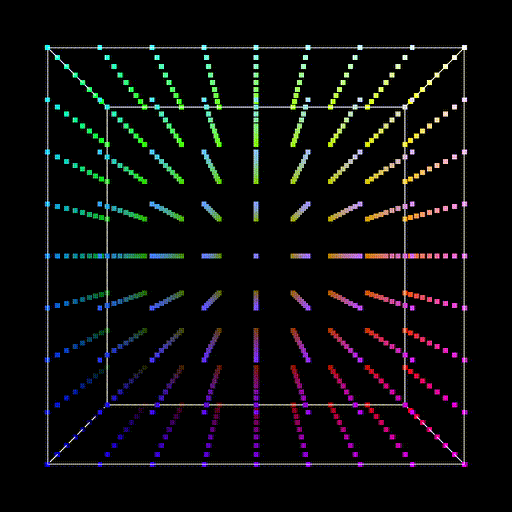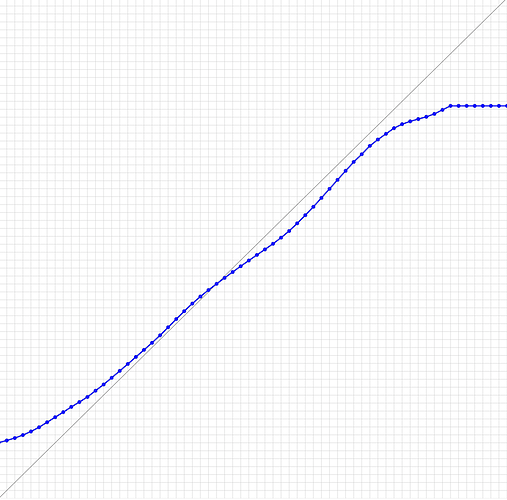This is a plot of the curve of a LUT which when applied in ACEScct matches the look of the ARRI K1S1 LUT when viewed through the RRT and Rec.709 ODT:
The K1S1 look is not a million miles away from ACES at all, and you can see that this is not a simple curve that you could match easily with a grade. And the colours are warped quite significantly by the LUT too.

I don’t have an HDR monitor here, so I am not able to test what the result of my LUT looks like when viewed through an HDR ODT. It certainly appears that it would limit the highlights.
Anyway, my takeout of this is that yes, you can make a LUT which matches the look of another LUT when viewed through the ODT targeting the same display the original LUT did. Maybe even any display with the same dynamic range. But to match it accurately you need a new LUT, not a grade, and you have to ask yourself what you are looking to achieve, and why you are doing it. If you want to use an ACES pipeline, you are probably better off taking a step back, and working out what the aesthetic of the LUT is, and then creating a grade to match that within ACES. You could plot a curve like mine as a reference, but should probably only match it vaguely, and reshape the top end so it continues up, rather than flattening out (as any ACES LUT derived from an SDR LUT is likely to do) so it preserves dynamic range for HDR.
The point where the curve flattens is the ACEScct equivalent of LogC 1.0. The K1S1 LUT only goes up to that, so there is no information on what “should” happen above that point. But working through a LUT which flattens like this will prevent you pushing the highlights up to HDR peak values with a grade.
Likewise, the LUT compresses the colours to only the part of the ACEScct colour space needed to produce the Rec.709 output colours from the K1S1 LUT. So this would also limit the gamut available though other ODTs. This emphasises why starting from an existing LUT is limiting, particularly as many look LUTs out there are designed for Rec.709. You are negating some of the benefits of ACES – multiple deliverables via different output transforms. Emulating the “feel” of a LUT with an ACES grade is usually preferable.
